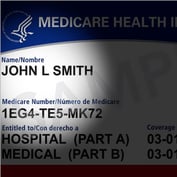Bush administration officials have come out on the side of labor groups on 2 points in a draft of a Family and Medical Leave Act update.
The U.S. Department of Labor, has decided that employers should not be able to count time spent on light duty when determining whether employees have used up their 12-week allotment of unpaid FMLA medical leave.
Department officials also decided against granting employers’ request for major changes in a provision that permits employees to use FMLA medical leave to deal with any health condition that results in a “period of incapacity of more than 3 consecutive calendar days” that involves treatments 2 or more times by a health care provider or leads at least once to a “regimen of continuing treatment.”
Labor Department officials published the FMLA update draft today in the Federal Register, in a notice of proposed rulemaking.
Congress originally adopted the FMLA in 1993. The law protects the jobs of eligible workers who miss up to 12 weeks of work per year as a result of the birth or adoption of a child, a serious health condition or a serious health conditions affecting close relatives.
Disability insurers with absence management operations have taken a keen interest in the FMLA, in part because of reports that employees at some companies have started using the FMLA in connection with relatively minor conditions, such as colds, that lead to absences of just 3 days.
Companies also have reported stories of employees who have used the ability to take FMLA leave in increments of as little as 3 minutes to justify coming in to work slightly late each morning, or to change their shifts.
The Labor Department conducted studies of the FMLA in 1996 and 2001, and it published a request for public comments about the FMLA in 2006.
The 2006 request for comments drew 15,000 responses, Labor Department officials report.
Many commenters wrote to support or complain about the department’s interpretation of an FMLA provision that governs employees who take “light duty” assignments while coping with serious health conditions.
The Society for Human Resource Management, Arlington, Va., joined with the U.S. Chamber of Commerce, Washington, and many other business groups to ask the Labor Department to count days when employees can handle only light duty assignments as days off for purposes of computing FMLA leave periods.
Labor unions and groups such as Families USA, Washington, argued that counting light duty work as FMLA leave is not appropriate.
The Labor Department itself has been counting light duty days as days off for some purposes and work days for other purposes.
“Upon further review,” officials write, “the department believes that the current regulatory language does not serve the [FMLA's] purpose to provide job protection when FMLA leave is taken,” officials write.








 February 11, 2008 at 10:06 PM
February 11, 2008 at 10:06 PM










